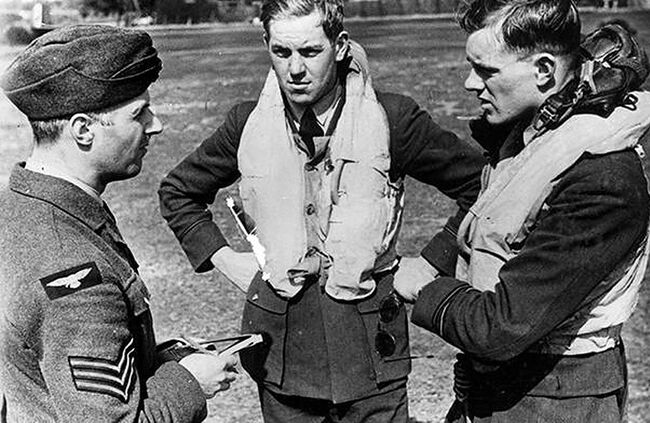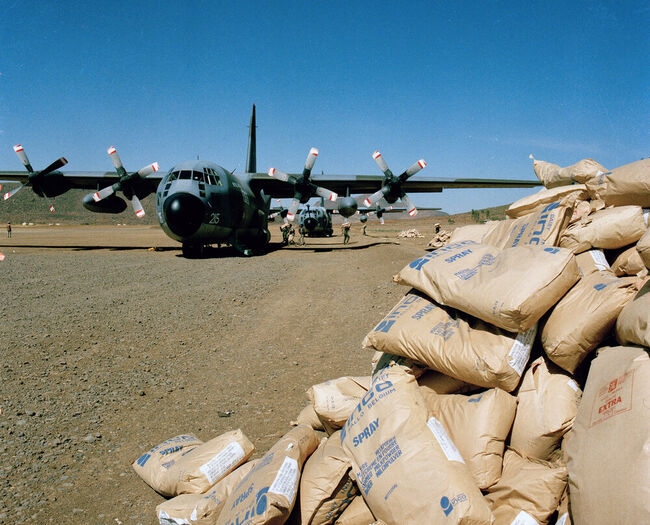RAF timeline
Here are some of the key events from the RAF's history.
1 April 1918
The RAF was formed, merging the Royal Flying Corps and the Royal Naval Air Service.

4 August 1919
The present rank titles of the RAF were introduced by the Air Ministry Order.
23 October 1919
The RAF Benevolent Fund was founded by Lord Trenchard, to support all serving and former members of the RAF, as well as their partners and dependent children.
3 July 1920
The first RAF Pageant is held at Hendon and attended by 60,000 spectators.
1921
The RAF is given responsibility for all British forces in Iraq, policing tribal unrest.
1 April 1924
The Fleet Air Arm of the Royal Air Force was formed under the control of the Air Ministry. It consisted of the RAF units that were usually embarked on aircraft carriers and fighting shifts.
1925
The RAF is deployed to Afghanistan, seeing them employed independently for the first time in their history.
1 October 1925
The first University Air Squadron was formed at Cambridge. This was shortly followed by Oxford on 11 October.
29 October 1925
The Observer Corps, later known as the Royal Observer Corps, was formed to collect and report movement of aircraft.
1936
The reorganisation of RAF command saw the creation of Fighter Command, Bomber Command, and Coastal Command.
1939
The outbreak of the Second World War, the RAF undergoes rapid expansion.
28 June 1939
The Women's Auxiliary Air Force was created from the Auxiliary Territorial Service.
5 September 1939
The first RAF attack was made on an enemy U-boat by No 500 Squadron.
December 1939
The British Commonwealth Air Training Plan saw the air forces of British Commonwealth countries trained for RAF service.
4 June 1940
Operation Dynamo – 316,663 troops were evacuated from Dunkirk.
15 September 1940
Battle of Britain Day – RAF Fighter Command claimed what proved to be a decisive victory over the German Luftwaffe.
1 February 1941
The Air Training Corps was constituted.
1 February 1942
The Royal Air Force Regiment was established by the Royal Warrant.
31 May 1942
RAF Bomber Command started large-scale night time bombing raids with up to 1,000 aircraft.
16 - 17 May 1943
Operation Chastise. An attack on German dams, carried out by RAF No. 617 Squadron, now known as the Dam Busters.
18 February 1944
Operation Jericho – an Allied low altitude bombing raid on Amiens Prison to rescue French Resistance prisoners in German-occupied France.
17 – 25 September 1944
Operation Market Garden – an airborne invasion of Holland in an attempt to seize the bridges across the River Rhine.
1 February 1942
The Women's Auxiliary Air Force was renamed the Women's Royal Air Force.
26 June 1948 – 12 May 1949
The Berlin Airlift. In their first major operation of the Cold War, the RAF provided 17% of the total supplies delivered to West Berlin during the Berlin Blockade.
20 September 1952
Jean Lennox Bird became the first woman to be awarded RAF pilot's wings.
1 June 1956
No 216 Squadron became the world's first military jet transport squadron.

6 May 1965
The first Red Arrows display took place at RAD Little Rossington.
30 April 1968
RAF Bomber and Fighter Commands merged to create the RAF Strike Command.
1 January 1972
The RAF's first Airborne Early-Warning Squadron was formed.
1 March 1973
Operation Khana Cascade – RAF Hercules aircraft of 46 Group dropped 2,000 tons of supplies to Himalayan villagers in Nepal. The biggest airlift since Berlin.
1 November 1984
Operation Bushel - RAF Hercules took part in an emergency airlift of food and supplies in Ethiopia.
1 February 1991
Flying Officer Anne Marie Dawe became the RAF's first female navigator.
11 December 2009
The Atlas made its first flight.